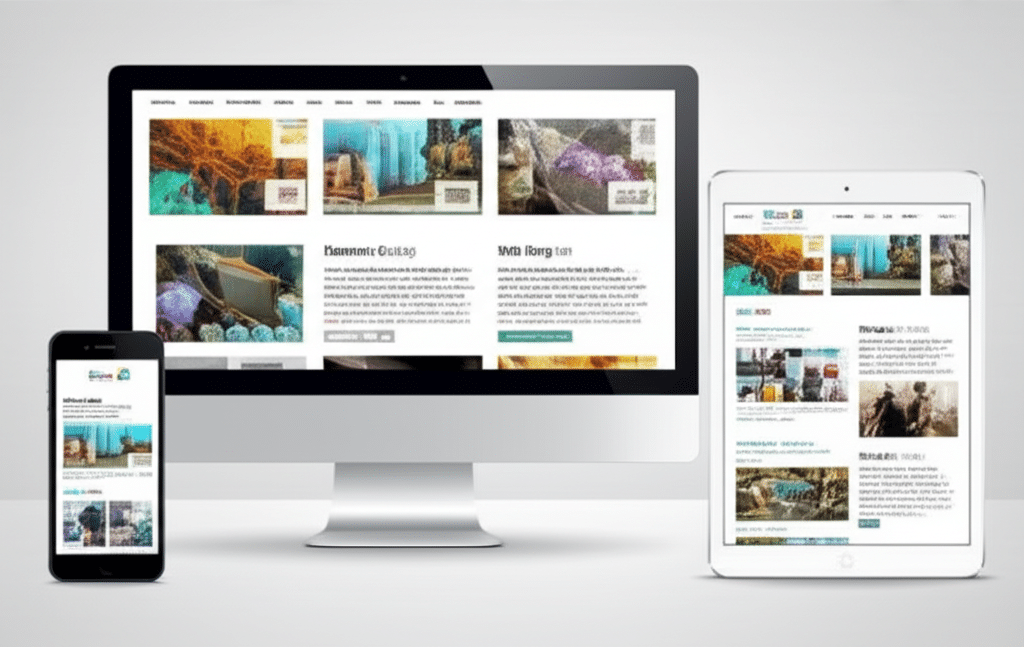Is your website feeling a little…stale? Like that loaf of bread you forgot about in the back of the pantry? In today’s fast-paced digital world, a website isn’t a “set it and forget it” asset. It’s a dynamic tool that needs regular attention and occasional overhauls. If you’re wondering if your online presence needs a little revitalization, you’ve come to the right place. This article will explore 5 Signs Your Website Needs a Refresh, helping you identify areas for improvement and ensure your website continues to perform at its best.
Sign 1: Your Website Looks Dated
First impressions matter, and your website is often the first interaction a potential customer has with your brand. A dated design can instantly turn visitors away. Think about it – would you trust a business with a website that looks like it was built in the early 2000s? Probably not. Outdated design elements like clunky layouts, clashing colors, and excessive Flash animations can make your website look unprofessional and untrustworthy. Modern web design trends favor clean lines, intuitive navigation, and responsive design that adapts seamlessly to different devices.
Identifying an Outdated Design
Recognizing an outdated design can sometimes be tricky, especially if you’ve become accustomed to your website’s look. Ask yourself these questions: Does your website look significantly different from your competitors’? Does it feature stock photos that feel generic and impersonal? Is the navigation confusing or difficult to use? If you answered yes to any of these questions, it might be time for a website refresh.
Sign 2: Your Website is Slow as Molasses
In today’s instant gratification world, nobody has time to wait for a slow website to load. A sluggish website can lead to high bounce rates, frustrated users, and ultimately, lost business. Several factors can contribute to slow loading times, including large image files, outdated plugins, and inefficient code. Google also considers page speed a ranking factor, so a slow website can negatively impact your search engine optimization (SEO) efforts.
Testing Your Website Speed
Numerous online tools can help you test your website’s speed and identify areas for improvement. Tools like Google PageSpeed Insights and GTmetrix provide detailed reports on your website’s performance and offer specific recommendations for optimization. Aim for a load time of under three seconds to provide a positive user experience.
Sign 3: Your Website Isn’t Mobile-Friendly
More people than ever are accessing the internet via their mobile devices. If your website isn’t optimized for mobile viewing, you’re missing out on a significant portion of your potential audience. A mobile-friendly website should adapt to different screen sizes, providing a seamless browsing experience regardless of the device used. This is often referred to as responsive design.
Checking for Mobile Responsiveness
A simple way to check your website’s mobile responsiveness is to resize your browser window. If the content doesn’t adjust accordingly, your website isn’t responsive. You can also use Google’s Mobile-Friendly Test tool to assess your website’s mobile compatibility.
Sign 4: Your Content is Stale and Outdated
Content is king in the digital world. Regularly updating your website with fresh, relevant content keeps your audience engaged and signals to search engines that your website is active and authoritative. Outdated content, on the other hand, can make your website appear neglected and irrelevant. This is especially true for industries where information changes rapidly, such as technology or healthcare.
Revitalizing Your Content
A website refresh provides an excellent opportunity to review and update your existing content. Consider adding new blog posts, articles, or videos to provide valuable information to your audience. Ensure your content is optimized for relevant keywords to improve your search engine rankings. A content audit can help you identify outdated or underperforming content that needs to be revised or removed.
Sign 5: Your Website Isn’t Converting Visitors into Customers
Ultimately, the primary goal of your website is to generate leads and convert visitors into customers. If your website isn’t achieving this goal, it’s time for a serious evaluation. Low conversion rates can be attributed to several factors, including poor user experience, unclear calls to action, and a lack of compelling content.
Improving Website Conversions
A website refresh can significantly improve your conversion rates by addressing these underlying issues. Analyze your website analytics to identify areas where users are dropping off. Consider implementing A/B testing to experiment with different design elements and calls to action. Make sure your website clearly communicates your value proposition and makes it easy for visitors to take the desired action, whether it’s making a purchase, filling out a contact form, or signing up for a newsletter.
Recognizing when your website needs a refresh is crucial for maintaining a strong online presence and achieving your business goals. These 5 signs indicate that it might be time to revitalize your website and ensure it continues to serve its purpose effectively. Ignoring these signs can lead to lost opportunities and hinder your growth in the competitive digital landscape. Don’t let your website become a digital dinosaur. Embrace the opportunity to refresh and revitalize your online presence, ensuring it remains a valuable asset for years to come.
So, what are you waiting for? Take a critical look at your website and see if it’s showing any of these signs. If it is, it might be time to consider a website refresh. Need help getting started? Contact us today for a free consultation!













